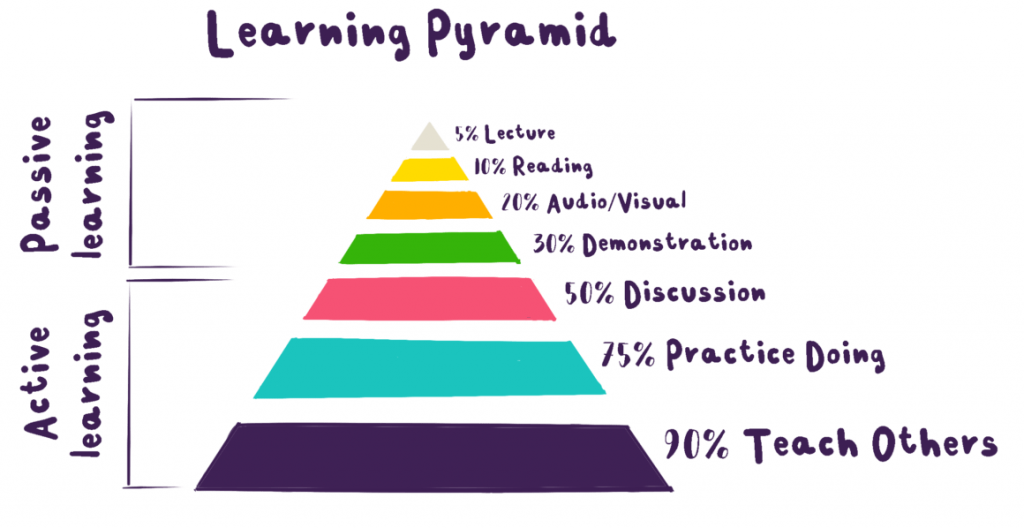
The digital disruption of recent years didn’t pass by education: eLearning has seen rapid growth during the last years, expected to reach $325 billion by 2025. As a result, many companies have jumped the bandwagon, creating their own eLearning courses to sell them or invest in their employees’ learning and development.
Factors and elements of e-learning
This happened for several reasons, with companies understanding the benefits of distance learning, the digital disruption and the pandemic being some of them. And while eLearning is becoming more and more popular, choosing the proper eLearning methods may still be a challenge for many companies and individuals. First, it is still a challenge to learn the eLearning methods. Second, the way you use it will decide whether your efforts are successful, so it requires planning, research, and analysis.
To help you navigate this process, we look at crucial eLearning factors and elements you should consider in this article.
How to choose the right eLearning methods?
What to consider?
When developing the proper eLearning method, there are many nuances you need to plan and consider in advance. From the budget to the course time frame, carefully planning even the most minor details will help you build a course that will be successful and help the learners unlock new knowledge and opportunities. Here are some of the things to plan and consider:
Know your objectives
What is the critical objective of your course? A remote onboarding webinar, or even a pre-recorded video, is different from a leadership course, so you’ll need to be clear on what outcome you are looking for.
What is your budget
Your budget is one of the cornerstones of your eLearning course, and you need to consider it when choosing the correct method. Your budget will decide what type of content you create, what platform (e.g., a website builder, video hosting platform) you’ll use, and how you’ll market your course.
The background of the learners
What course are you teaching, and what is the learner’s experience? If, for example, it’s an advanced competitor analysis course, it might not be the best place to start for someone new to marketing. Therefore, always consider who your learners are to provide them with content that matches their existing knowledge.
Which eLearning tool will you use?
The tool you’ll choose for your course plays a crucial role in its overall success. The features of different eLearning platforms come with a different learning experience in the end, and you need to find one that matches your needs best. Consider all the tools the platform comes with and pay close attention to website security.
Which content type you’ll incorporate
Will it be a live webinar, slide-based course, or pre-recorded videos? There are many learning content types that you can use, each one requiring a different budget.
How will you promote your course?
Whether it’s an online course your company launched that you want to sell or an eLearning course for your team’s internal use, you’ll probably need to promote it. The resources you’ll need, and your final strategies will vary depending on how you plan to do so. Nurturing the email marketing leads you already have and letting them know about the course will be less resource-consuming than running paid ads, and they also may be better for the textual courses. The key is knowing how you’ll reach people with your course so that your efforts are not wasted.
To create a meaningful eLearning experience, you need to know how to approach the digital learning process and provide the learners with valuable information in a well-planned and engaging way.
Learning content types
Digital content comes in many different forms, and to succeed, you need to understand how to use and combine them effectively. Below, we take a look at other content types you can use for your eLearning needs.
Nonreciprocal content
You might have guessed from the name already: nonreciprocal content is the “one-way” content type, where the learner is a passive consumer. Nonreciprocal content is the most common type of content that people are used to when it comes to online learning. The nonreciprocal content types include the following:
- Readings — This one is pretty straightforward: readings are articles, book chapters, or other pieces of text that people read for information. For many online courses, readings also come in the form of emails with additional material.
- Videos — From pre-recorded lectures to live webinars, videos are probably the most engaging type of nonreciprocal content. They combine both visual and auditory senses and help explain the topic engagingly and understandably.
- Podcasts — Podcasts are a great way to engage your team members through content that is more appealing than text but doesn’t require the attention and involvement needed for the video content.
Experiential content
Experiential content is the type of content that is more engaging and requires more involvement from the part of the learner. It gives a chance to the learner to play around with the material to understand it better. Some examples of experiential content are:
- 360˚ Videos — With VR becoming increasingly popular, 360˚ videos are becoming increasingly widespread. Platforms like Facebook and YouTube are now supporting them, making them one of the most engaging and beloved content types. These videos make the learners pay closer attention to the material, absorbing it better.
- Interactive infographics — As opposed to their still counterparts, Interactive infographics encourage the learners to play around with the information by highlighting certain parts at a time. This helps the learners to interact with the material instead of just absorbing it passively.
- Image Juxtaposition — Image juxtapositions are another interactive content type that showcases the difference between images containing specific data. This type of content encourages learners to compare two sets of information.
Assessment
Assessments are an essential component of every online and offline learning process. They allow you to get an idea of how the learners perform and find out how practical the course is.
- Quizzes — From short quizzes containing single-question full-length essays, or final tests, these types of “exams” allow us to understand how effective the learning process is. They explain how much the learner has understood the material and needs to cover it again for better results.
- Post-course surveys — Short surveys allow the learners to share their experiences with you. You can then use this information to improve your content, make it more effective, and tailor it to your objective. Do this right after the course is completed, or give the learners some time to “digest” the information. Use SaaS email templates to collect their emails before the class and send them a survey after several days.
The learning pyramid
When developing the content for your eLearning materials, it’s critical to consider how effective your teaching methods are. Here is where the Learning Pyramid comes to help. According to the Learning Pyramid method, some forms of teaching are more effective than others. They are separated into passive and active learning.
Passive learning
Passive learning is the learning process when the learner acts as only the material consumer, without much input from their side. Nonreciprocal content types, such as readings, videos, podcasts, and demonstrations, can be described as passive learning. Passive learning is the most common eLearning method and results in around a 30% retention rate.
Active learning
As opposed to passive learning, active learning is the process when the learner contributes to the process. Discussions, experiments, presentations, and teaching others are examples of active learning resulting in around a 70% retention rate, making it a more effective learning method.
Although active learning results in a higher retention rate, these two methods cannot be separated from each other, as they lead to the understanding of the material as well as possible. When choosing the proper eLearning methods for your team, and creating content for it, consider incorporating them.

To Sum Up
When developing eLearning methods, it’s crucial to develop solutions that will help elevate the learners’ knowledge in the most effective way possible. For this, it’s essential to design a course that considers different elements and factors of eLearning and combines them efficiently.
We hope this article could provide valuable tips to consider when choosing an eLearning method. Of course, there is no “perfect” way of creating an online system, but careful planning can help you select the perfect eLearning method for your goals. Good luck!
We are sure you will succeed, and the e-learning software platform MyOwnConference is an excellent service for your ideal e-learning events.

Mariam is a creative and hard-working content writer focused on SEO-optimized articles. Her skills as an SEO specialist allow her to create both reader- and Google-friendly pieces of content. As part of her specialty as a Digital Marketer, Mariam has contributed to various website blogs. She has deep knowledge in industries such as digital marketing, branding, eCommerce growth, and more.











